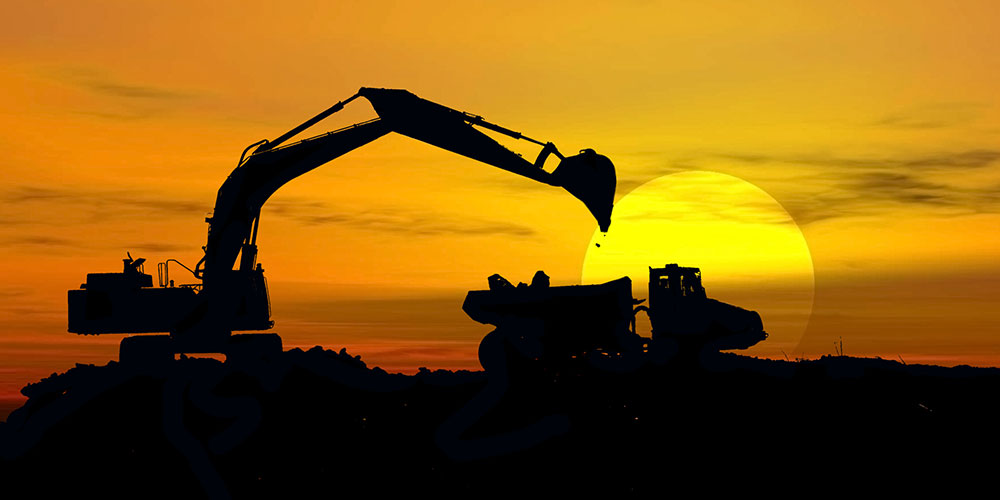Consulting Civil Engineering Companies Providing Geotechnical Solutions
Consulting Civil Engineering Companies Providing Geotechnical Solutions
Blog Article
Just How Consulting Engineers Enhance Geotechnical Engineering Projects: Insights Into Their Experience, Methodologies, and Collaborative Approaches
Consulting designers are critical in improving geotechnical design tasks, applying their specialized understanding to browse the intricacies of subsurface problems. Their joint strategies foster interaction among varied job stakeholders, inevitably forming the job's trajectory.
Duty of Consulting Engineers
The know-how of speaking with engineers in geotechnical design is essential to the effective execution of building tasks. These specialists play a pivotal duty in evaluating dirt and rock residential properties, which are crucial aspects affecting design and building decisions. By carrying out thorough website investigations, getting in touch with designers accumulate vital data that educates the style procedure, guaranteeing jobs are constructed on steady and appropriate ground.
Consulting engineers likewise provide indispensable understandings right into risk administration (geotechnical geologist). They determine possible geotechnical dangers, such as landslides, soil liquefaction, and negotiation problems, allowing stakeholders to apply efficient mitigation approaches. Their competence aids in optimizing structure designs, which can lead to considerable expense savings and enhanced safety
In addition, speaking with designers serve as an essential link between task proprietors, architects, and professionals. Their capability to translate intricate geotechnical data right into workable recommendations fosters partnership and facilitates educated decision-making throughout the job lifecycle. This multidisciplinary strategy not only boosts job efficiency but likewise makes sure conformity with regulatory standards and finest practices.
Trick Methods in Geotechnical Design

One main method is website examination, which includes performing area examinations and lab analyses to collect information on subsurface conditions. Strategies such as Criterion Penetration Screening (SPT) and Cone Penetration Screening (CPT) are extensively used to evaluate soil stratigraphy and stamina. Furthermore, geophysical techniques, including seismic and electric resistivity studies, offer non-invasive ways to assess subsurface features.
Another vital method is mathematical modeling, which allows engineers to mimic various situations and predict exactly how soil-structure communications will certainly behave under various loading conditions. Limited Element Evaluation (FEA) is a common technique used in this context.
Furthermore, the layout of structures, keeping frameworks, and earthworks depends greatly on these techniques - geotechnical geologist. By integrating innovative analytical devices with area information, seeking advice from designers can create tailored remedies that attend to certain project obstacles, ultimately adding to the security and security of building and construction projects
Significance of Soil Analysis
Dirt evaluation functions as a fundamental component in geotechnical engineering, supplying essential insights into the physical and chemical buildings of soil essential for efficient construction planning. Recognizing dirt attributes is critical for establishing its load-bearing ability, water drainage actions, and potential for settlement or instability. Read More Here In-depth soil investigations, including sampling and laboratory testing, assistance recognize parameters such as dirt kind, dampness web content, thickness, and shear strength.
These analyses educate the selection of ideal building methods and materials, ultimately influencing job security and durability. Cohesive soils may call for various structure styles compared to granular dirts, requiring tailored design remedies. Dirt evaluation aids in identifying contaminants that might pose threats to human health and wellness or the setting, enabling for the development of mitigation methods.
Incorporating dirt evaluation into the very early stages of task growth assists to minimize unexpected challenges, guaranteeing that designers can anticipate and attend to potential concerns prior to they intensify. By developing a comprehensive understanding of the site problems, speaking with designers can maximize layout performance and reduce costs, therefore improving the overall success of geotechnical design tasks.
Collective Strategies in Tasks
Effective geotechnical jobs usually rest on collective strategies that combine diverse competence from various disciplines. Effective partnership among getting in touch with designers, rock hounds, environmental scientists, and construction professionals is critical for addressing complex obstacles and maximizing task end results. By leveraging the one-of-a-kind abilities and knowledge of each employee, tasks can profit from an alternative understanding of the site conditions, regulatory needs, and engineering restrictions.
Routine interaction and interdisciplinary meetings help with the sharing of insights and foster a culture of synergy. These joint initiatives allow the recognition of possible dangers original site early in the task lifecycle, permitting timely mitigation methods. In addition, integrating feedback from stakeholders, consisting of regional communities and governing companies, guarantees that all viewpoints are thought about, improving job acceptance and conformity.
Additionally, the integration of sophisticated modern technologies, such as Geographic Details Equipment (GIS) and Building Details Modeling (BIM), further improves partnership. These tools permit for the real-time sharing of information and visualization of geotechnical conditions, promoting informed decision-making. Eventually, a collaborative method not just improves job execution yet additionally lays the foundation for ingenious remedies to complicated geotechnical design difficulties.
Effect On Task Outcomes

Consulting designers use advanced approaches such as risk evaluation and anticipating modeling, which boost the accuracy of project forecasts. Their capability to incorporate innovative technologies, like geotechnical instrumentation and information analytics, additionally refines the design and construction processes. Therefore, jobs experience boosted efficiency, minimized expenses, and lessened hold-ups.
Additionally, promoting efficient interaction and collaboration among team members improves analytic capacities. When difficulties develop, a joined front enables quick identification of services, avoiding potential troubles. Eventually, the joint initiatives of consulting designers contribute to better results, making sure that projects meet both regulative criteria and client assumptions.
Conclusion

Report this page